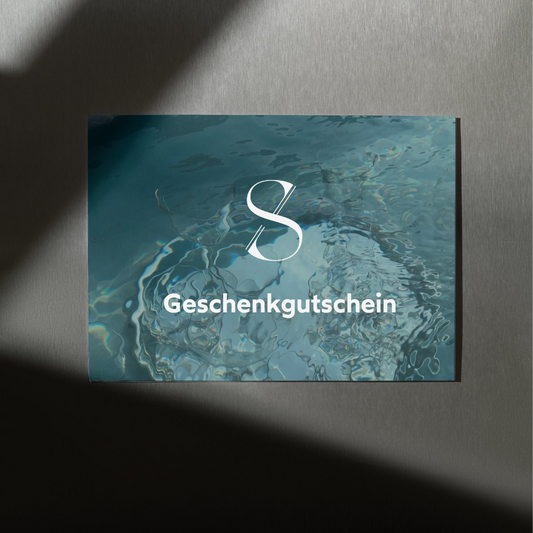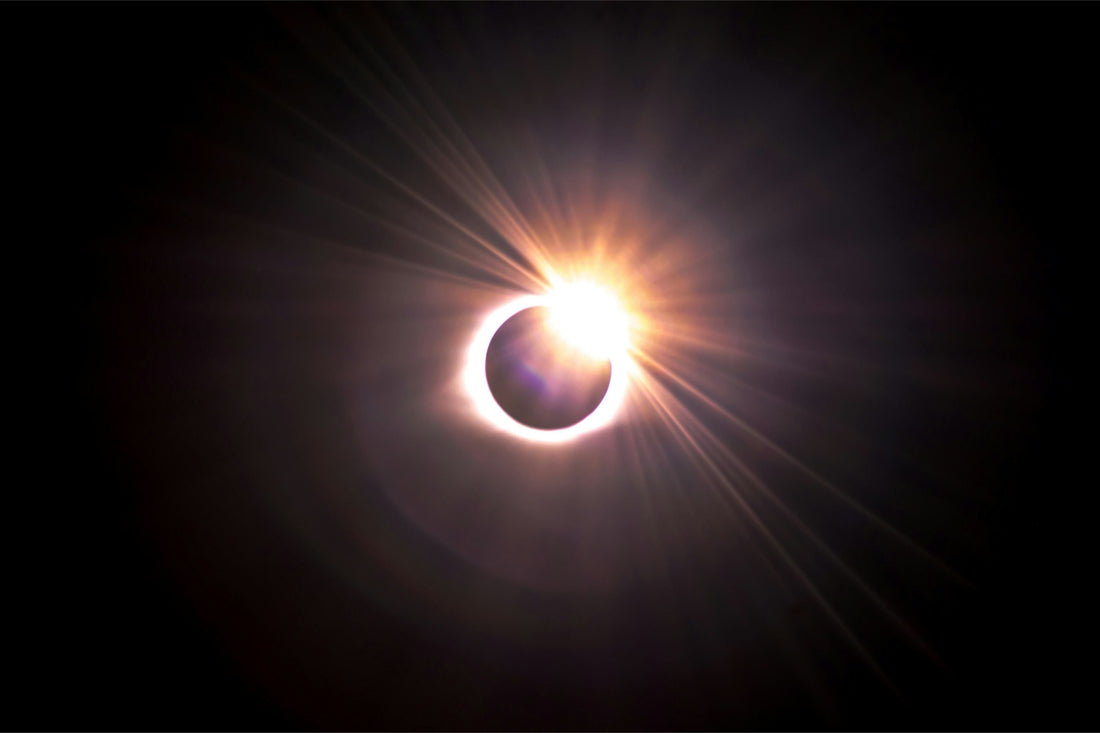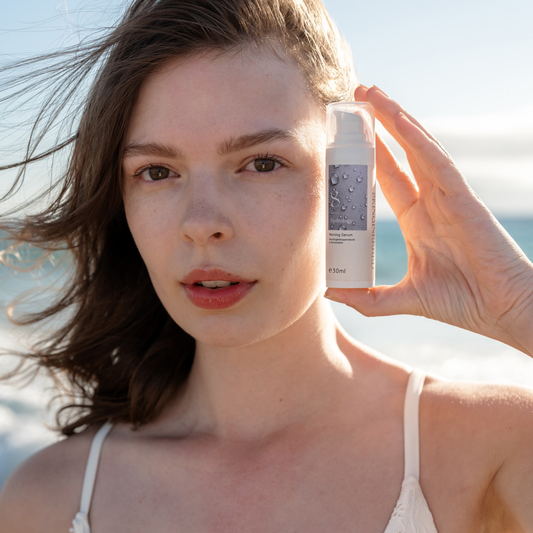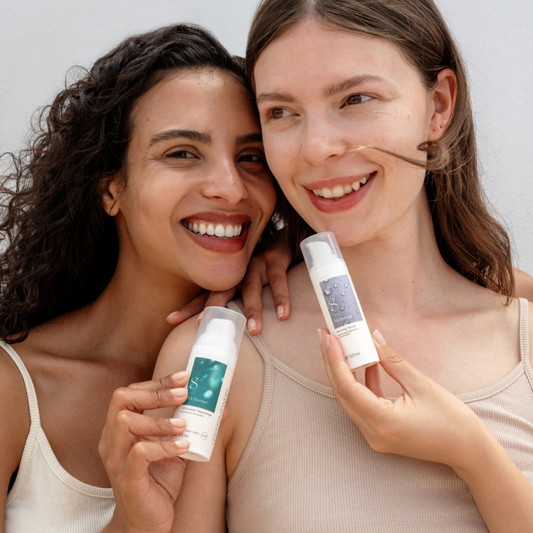Every year, with the first days of summer, they reappear: sunscreen myths and dangerous misinformation. "Full of toxic substances," "hormonally active," "natural alternatives," "chemical-free," "pre-tanning," "use raspberry seed oil," etc.
overview
- Facts about skin cancer
- Do you know a good answer to these five sunscreen myths?
- Why are sun protection myths so successful ?
- Why are even seemingly harmless myths considered problematic?
First, a few facts:
German Dermatological Society: In 2022, around 330,000 people in Germany were newly diagnosed with skin cancer (1).
Anyone who uses no or less sunscreen out of uncertainty increases their risk of skin cancer. Yes, the sun is a part of life and has many positive aspects. But its radiation is definitely also carcinogenic .
Federal Office for Radiation Protection: UV radiation can cause numerous health problems in the skin and eyes - in the worst case skin cancer (2).
Sun protection can take many forms, so everyone should be able to find something they feel comfortable with. There are many options to choose from: organic sunscreens, natural cosmetics, organic products, sprays, sticks, textiles, etc. As long as the protection is certified according to ISO standards (no DIY or oil-based products!).

Photo: by Nadine E via Unsplash
Five myths:
1. People who are already tanned don't need sunscreen!
Oh yes! UV-induced tanning (IPF) provides a maximum sun protection factor of 3-4. Far too little for a long day at the beach in the blazing sun (3).
2. Coconut oil is a great alternative!
Coconut oil, with an SPF of approximately 1 to 3 depending on the study, is particularly poor. Other plant oils also rarely achieve more than 5. Insufficient (4)!
3. People didn't get skin cancer in the past!
In the past, people died at 30 and, as fair-skinned individuals, were less likely to be able to sunbathe near the equator. Skin cancer is an age-related condition (but not exclusively!) (5).
4. SPF does not produce vitamin D!
Yes and no. Sunscreen reduces local vitamin D production, but in everyday life, the protection is imperfect enough. In our latitudes, many people need to supplement anyway, as a sufficient amount cannot be produced due to the sun's position in winter. Unlike the sun, vitamin D tablets are not carcinogenic (6).
5. Healthy tan...
...does not exist! Every instance of excessive sun exposure adds up to the risk of skin cancer (7).
>> Click here for the blog post "Sun protection factor: how long can I stay in the sun?"

Photo: from Trnava University via Unsplash
Why are myths so successful?
How can one reflect on claims about sun protection? Here's a brief explanation of a few mechanisms and tools that are also frequently found in populism and science denial in general:
1. Loss aversion
Studies show that we would rather forgo a large potential gain than lose something small. People are risk-averse and prefer to cling to the status quo. If inaction results in harm, we feel less guilty than if we could actively cause something negative.
In a coin toss with a €100 stake, an average prize of €250 must be offered for participants to accept the game. Even though the expected value is positive with a smaller prize, they choose not to accept the offer, even though it would be the rationally better choice (8).
That's why we're so susceptible to "warnings." If we're unsure about ingredients, we prefer to avoid them altogether. The fact that this avoidance carries a much higher risk, namely skin cancer from sun exposure, is conveniently ignored at that moment. No sun protection is definitely not the safer alternative!
2. Nauralistic fallacy
One aspect of the naturalistic fallacy is the belief that something occurring in nature is inherently " good . " This contrasts with synthetically produced substances such as UV filters (mineral filters, by the way, are also industrially manufactured and, like any naturally occurring substance, are "chemicals").
But what about our well-known fly agaric mushroom ? Many plants don't want to be eaten. Did you know that two teaspoons of a protein produced by bacteria could wipe out the world's population? One of the most potent known poisons: Botox.
On the other hand, water can be produced synthetically using hydrogen and oxygen. Of course, it always depends on the specific substance. Neither "natural" nor "synthetic" is inherently good or bad. Nature has very often been deadly throughout human history, and (medical) progress has significantly increased our life expectancy. The sun isn't harmless just because there would be no life without it.
3. Cherry Picking
Cherry-picking is a technique of science denial . It involves deliberately selecting only data and studies that confirm one's own position, while ignoring the much larger body of research that contradicts it .
For example: Someone who plays "Ludo" long enough could possibly win 5 times in a row. Rolling a one. Anyone looking at this moment in isolation might conclude that dice only ever produce ones. Who would still enjoy the game then?
Therefore, it's always advisable to consider the available studies to avoid being misled by outlier results. Reviews and meta-studies are useful for gaining an overview. Just because there are inherently toxic chemicals doesn't mean that every product containing chemicals is toxic.
Why are even seemingly harmless myths considered problematic?
We should also be careful not to spread even seemingly harmless myths. Myths propagate and amplify each other. For example:
Organic filters absorb light, mineral filters reflect it.
Wrong! This view is long outdated. It is now known that both types of filters primarily absorb radiation. Mineral filters also reflect approximately 5-15% (9).
Why is it important to stop spreading this myth? Isn't it a nice illustration? People often jump to conclusions based on incomplete information. They might get the idea that mineral filters don't need to be reapplied, or that organic filters are inferior, and so on.
Sunscreen is regulated by several bodies. It is important and right to continue research to make products even safer for people and the environment. However, the current fact remains:
Any uncertainty that leads to less sunscreen use harms people more than it helps.
Your Ying
Engineer, cosmetic scientist and founder of Skingineered

Sources:
(1) Professional Association of German Dermatologists, Skin Cancer Awareness Month May: Join in – protect yourself!, https://derma.de/presse/uebersicht/detail/hautkrebsmonat-mai-mach-mit-schuetze-dich (Created 06.05.2024)
(2) Federal Office for Radiation Protection, Protection against UV radiation, https://www.bfs.de/DE/themen/opt/uv/schutz/schutz_node.html
(3) Sheehan JM, Potten CS, Young AR. Tanning in human skin types II and III offers modest photoprotection against erythema. Photochem Photobiol. 1998, https://pubmed.ncbi.nlm.nih.gov/9796443/
(4) Ácsová A, Hojerová J, Janotková L, Bendová H, Jedličková L, Hamranová V, Martiniaková S. The real UVB photoprotective efficacy of vegetable oils: in vitro and in vivo studies. Photochem Photobiol Sci. 2021, doi : 10.1007/s43630-020-00009-3
(5) Moan J, Grigalavicius M, Baturaite Z, Dahlback A, Juzeniene A. The relationship between UV exposure and incidence of skin cancer. Photodermatol Photoimmunol Photomed. 2015, doi : 10.1111/phpp.12139
(6) Linos E, Keizer E, Kanzler M, Sainani KL, Lee W, Vittinghoff E, Chren MM, Tang JY. Sun protective behaviors and vitamin D levels in the US population: NHANES 2003-2006. Cancer Causes Control. 2012, doi : 10.1007/s10552-011-9862-0
(7) Barbara A. Gilchrest, Molecular Aspects of Tanning, Journal of investigative dermatology, 2011, doi : 10.1038/skinbio.2011.6
(8) Gesine Heeren, Neural Foundations of Loss Aversion, Dissertation, Bonn, University of Bonn, 2018
(9) Cole C, Shyr T, Ou-Yang H. Metal oxide sunscreens protect skin by absorption, not by reflection or scattering. Photodermatol Photoimmunol Photomed. 2016, doi : 10.1111/phpp.12214











